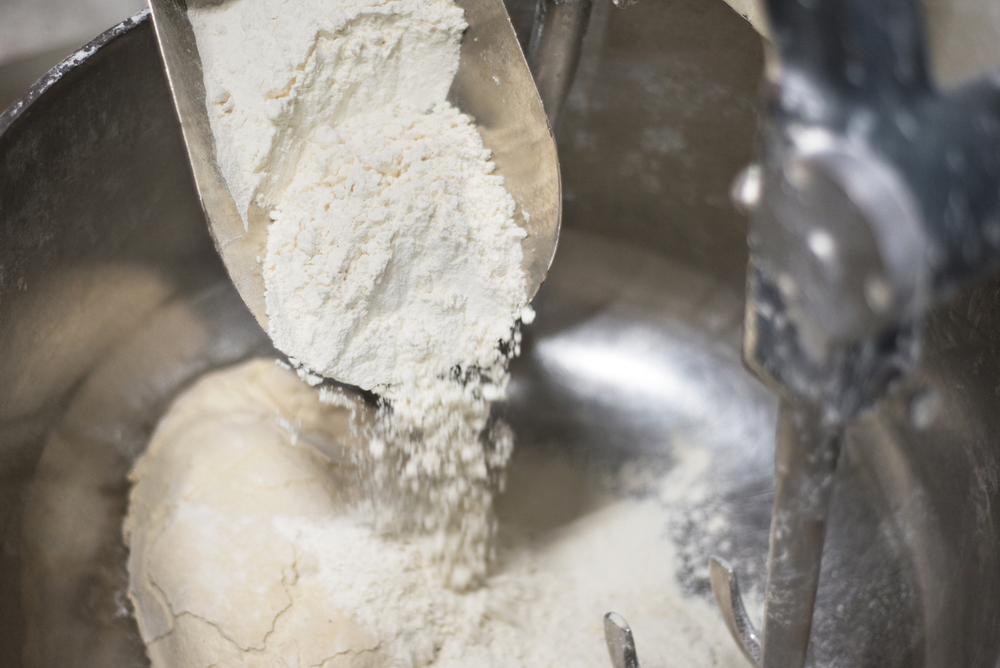
One of the traditional and most resilient sectors of the Greek economy is the flour industry, due to the relatively inelastic demand for flour products (bread and bakery products).
In 2023, according to the results of an ICAP CRIF sectoral study, total flour consumption followed a slightly upward trend. According to Stamatina Panteliou, Director of Economic & Sectoral Studies at ICAP CRIF, increased tourist arrivals in our nation and the resulting strengthening of demand from the professional channel (HoReCa) played a significant role in this assessment. However, the rate of increase was influenced by many factors, including geopolitical developments (the Russia-Ukraine war conflict). For the 2024–2025 period, the situation is projected to have normalized, and consumption is expected to grow at a slightly higher rate (average annual rate of around 2%).
Domestic production of wheat flour has shown small annual fluctuations over time. In 2018-2019, production increased at an average annual rate of around 4%, but this upward trend was interrupted in 2020 due to the COVID-19 pandemic that hit the global market. Domestic production recorded a negative rate of change, as it contracted by 6%, with the market for professional flour mill products being most affected. 2021 got off to a difficult start, as for the first 5 months or so, the catering sector, which is one of the main distribution channels of the industry (restaurants, hotels, and catering), operated under strict measures due to the health crisis. However, domestic production showed a 3% increase compared to 2020. In 2022, the sector's production continued to grow, but at a slower pace. In particular, production volume is estimated to have increased by 2%.
IMPORTS
Domestic production essentially meets demand, as imports are at low levels and import penetration has hovered around 3% in recent years. The industry's exports are also at low levels, with the export performance being around 4% over the last five years. It should be noted that the military conflict between Ukraine and Russia, which were two of the largest wheat producers in the world, drove wheat prices to very high levels. Several of the Greek flour mills were affected to some extent as they imported quantities of raw material (wheat) from these countries. They therefore turned to new, more expensive suppliers. High energy costs played an important role in shaping production costs, as well as increases in transport costs, which started to be observed as early as 2021.
In 2020, domestic consumption is estimated to have decreased by 6% compared to the previous year. This decrease is due to the particular circumstances created by the pandemic (Covid-19). The suspension of catering (lockdown periods) has had a significant impact on the sector, as it is a key distribution channel for products. Compared to the previous year, there was a significant decrease in professional products of the flour industry, aimed at the artisanal bakery and confectionery sector, while a significant increase was observed in consumer products (for domestic use). It should be noted that the professional sector covers the bulk of the demand for flour. In 2021, with the gradual normalisation of market conditions, domestic flour consumption increased by 2%. The upward trend of the market continued in 2022, with the size of consumption estimated to have recorded a 4% increase compared to 2021, while in 2023 it is estimated to have increased by 1% (2023/2022).
The pasta industry consumes the majority of the semolina produced, with a smaller amount going to other food industries. In 2022, domestic consumption is estimated to have increased significantly by 15% year-on-year, while in 2023, the increase is estimated to have continued, but at a slower pace, reaching 3%.
In 2020, semolina production will increase by 7%. Although the main distribution channel for pasta is the catering sector, which operated under very tight conditions or not at all for some months of the year, demand for pasta for home use increased sharply. In 2021, with a gradual return to normality, semolina production increased by around 2%, while in 2022, production is estimated to have shown a significant increase of 15% compared to 2021.
ECONOMIC PERFOMANCE
According to estimates, the market size of the wheat flour market in value terms (at wholesale prices) recorded a significant increase in 2022 compared to 2021. This increase is primarily the result of rising selling prices of the products. Market participants point out that the rise in prices played a decisive role in shaping the sector's course in 2022. While sales in volume terms were at the same level as in 2021 or showed a slight increase, several flour mills experienced a significant increase in turnover that was primarily the result of price increases.
As part of the study, a financial analysis of the companies in the sector was carried out based on selected indicators. A grouped balance sheet was also prepared based on a representative sample of 23 companies in the industry for the period 2018–2022. From the analysis of the grouped balance sheet, the following results were obtained: Total assets increased throughout the five-year period under consideration, showing the highest increase in 2021 (+9.6%). In 2022, the increase ranged at 8.0% to 22.5% (2022–2018). Equity increased by 3.4% in 2022, while the cumulative increase over the five-year period under consideration ranged at 5.9% . Medium- and long-term liabilities and provisions increased significantly by 51.4% in 2022–18, while short-term liabilities also increased significantly by 33.0% over the same period. The total turnover of the companies in the sample followed an upward trend over the period under review, with the exception of 2020, where it decreased by 4.3%. In 2022, the highest increase of the five-year period was recorded as turnover increased by 41.6%, while cumulatively, it recorded an increase of 67.3% (2022/18). Gross profit recorded approximately the same increase in 2022 (41.7%), while cumulatively, it increased by 26.6% between 2022 and 2018. Net (pre-tax) profit after successive declines in 2020–2021 showed a spectacular increase in 2022, as it more than tripled, while the cumulative increase over the five-year period was 44.6%. EBITDA also increased significantly in 2022 (58.6%) but at a much slower pace compared to net profit. Of the 23 companies in the sample, 21 (91.3%) were profitable in 2022, compared to 19 in 2021 (82.6%).






